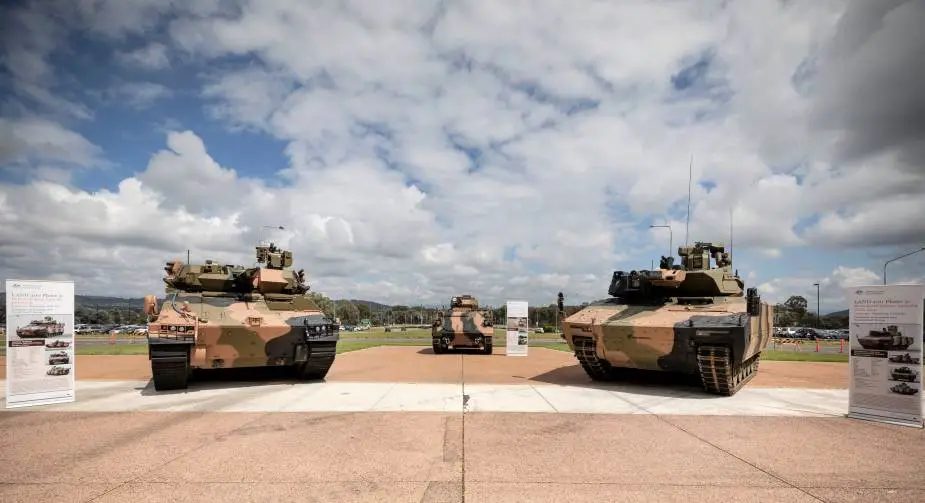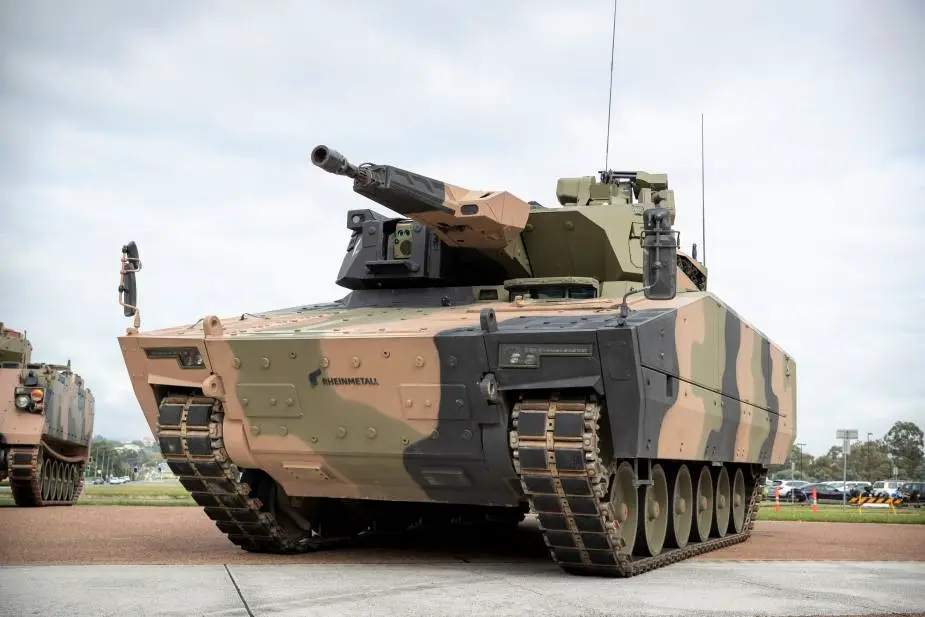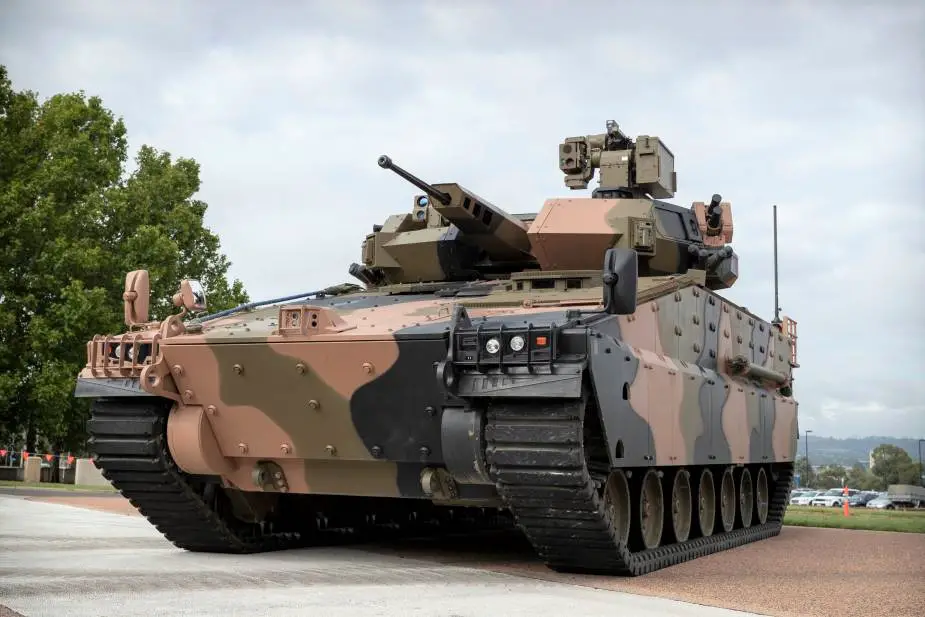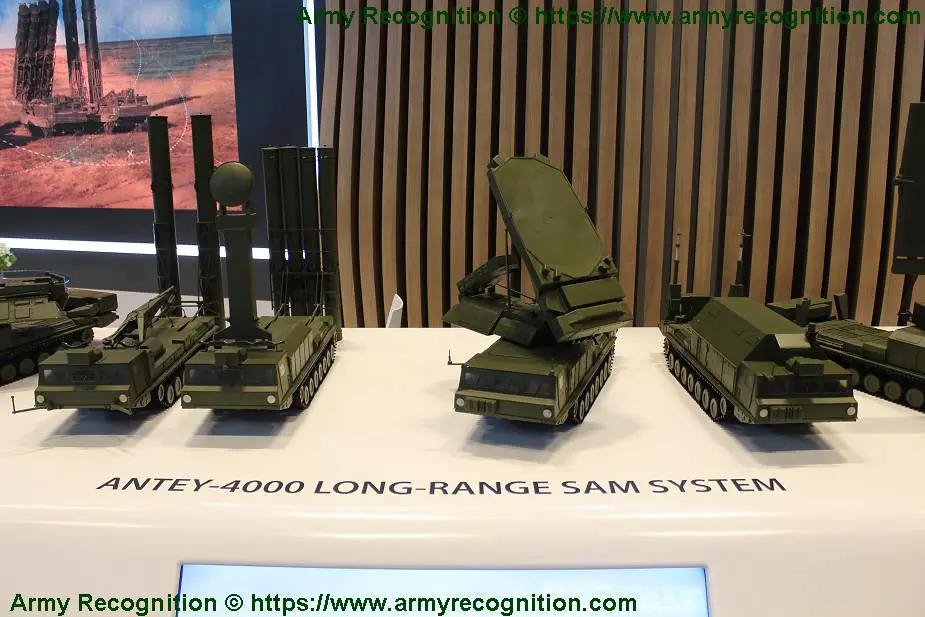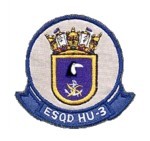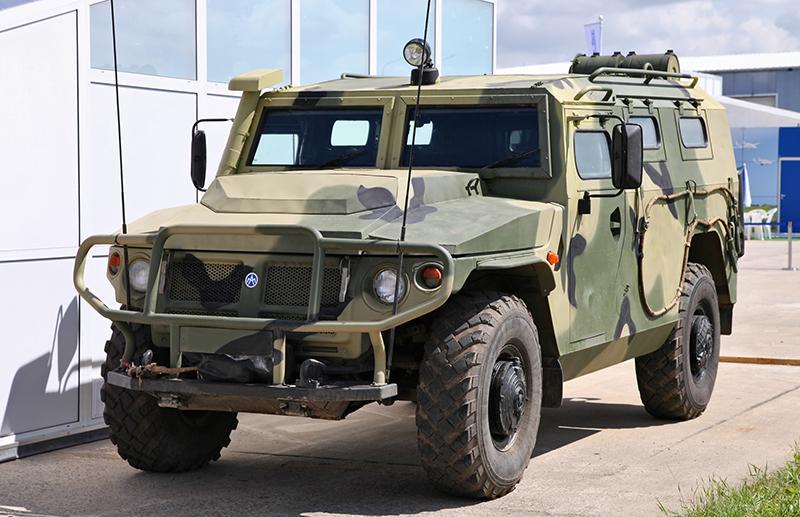Hanwha Redback and Rheinmetall Lynx selected for Land 400 Phase 3 replacement programme of M113
by
Alain Henry de Frahan | 12 March 2021
Hanwha Defense Australia’s Redback and Rheinmetall Defence Australia’s Lynx on display, dominating the M113 APC they'll replace. (Picture source: Australian MoD)
Two contenders for the Infantry Fighting Vehicle project were unveiled in Canberra on March 12, as part of the biggest acquisition project in Australian Army history: Hanwha Defense Australia’s AS21 Redback and Rheinmetall Defence Australia’s Lynx KF41 were on display, dominating the M113 armoured personnel carrier they'll replace.
Both vehicles are candidates for the Australian Army’s future infantry fighting vehicle, with Defence looking to acquire up to 450 under Land 400 Phase 3. From an earlier selection of four vehicles, Lynx and Redback were assessed as best to meet Defence’s requirements with growth potential to address future and evolving threats.
Three of each vehicle have arrived in Australia to undergo a risk-mitigation activity that will include mobility, reliability and blast testing. Contracts, supply chains and maintenance associated with the vehicles will also be examined, with a recommendation on the preferred tenderer going to the government for decision next year.
Capability Acquisition and Sustainment Group’s Head of Armoured Vehicles Major General David Coghlan said both were fifth-generation infantry fighting vehicles that would far surpass their predecessor, which had been in service in various forms since 1965: “The world has changed, the M113 has been in service almost as long as I’ve been alive,” Major General Coghlan said. “The operational environment today is totally different, far more demanding and far more threatening.”
Vehicle crews working with the evaluation program are due to commence conversion training in the coming weeks, before putting the vehicles through their paces. “The trial soldiers will be on a steep learning curve going into a fully digitised vehicle and turret, but they are up to it and are looking forward to putting the vehicles through their paces,” Major General Coghlan said. “Once a fleet of these is in our hands, they’ll operate in ways we haven’t contemplated yet.”
Aside from the three-man crew, the vehicles can carry six dismounted soldiers protected by armour and firepower generations ahead of the M113. “The role of the dismount in many ways won’t change, but they’ll be better protected and have much better communication and connectivity,” Major General Coghlan said. “How dismounts are used will be reflected in the ability of the vehicles to dominate the battlefield.”
The evaluation team would also keep in mind the potential for future digital, mechanical and weapon upgrades.
Despite the striking size difference, Major General Coghlan said this reflected the realities and dangers of contemporary battlefields. “Big equals protection and that in the modern environment equals weight, but the increased weight does not mean decreased mobility,” he said.
Rheinmetall Defence Australia’s Lynx KF41 (Picture source: Australian MoD)
Hanwha Defense Australia’s AS21 Redback (Picture source: Australian MoD)
Reminder: LAND 400 Phase 3
LAND 400 Phase 3 is a $10-15 billion Army program that recapitalises Army’s Vietnam-era M113 Armoured Personnel Carrier (APC) force, with a combination of a tracked Infantry Fighting Vehicle (IFV) and tracked APC. There were four main industry contenders, each offering a different solution to Army’s request for tender (RFT): BAE Systems Australia, Hanwha Defense Systems, General Dynamics Land Systems and Rheinmetall.
*
Rheinmetal Lynx KF-41: the Lynx KF41 includes the capability to support a crew of 12 (3 crew, up to 9 troops), have a max road speed of 70km/h, a road range of more than 500 kilometers, with an armament consisting of the Lance 2.0 30-35mm autocannon, a 7.62mm coaxial machine gun and a variety of additional close-in weapons systems.
*
Hanwha Defense Systems AS21 Redback: the AS21 includes the capability to integrate active protection systems into an evolved turret system. The Redback, like its BAE competitor, is capable of hosting a crew of 11 (3 crew, 8 troops), a top road speed of 70km/h, offroad speed of 40km/h, an operational range of 500 kilometres, with armament consisting of a 40mm autocannon and a single 7.62mm coaxial machine gun.
*
General Dynamics Land Systems Ajax: Ajax and its variants have a base weight of 38 tonnes (with growth up to 42 tonnes), and a crew of 9 in the IFV variant (3 crew, 6 dismounts), a 30mm stabilized cannon, supported by a 7.62mm coax machine gun and a 40mm Automatic Grenade Launcher (AGL). The Panoramic Primary Sight provides advanced all-weather imaging technology capability, which allows the IFV platforms to find, engage and target enemy combatants at far greater ranges than current legacy platforms.
*
BAE Systems CV90: CV90 has room for a crew of 11 (3 crew, 8 troops), a top speed of 70km/h, with an operational range of 900 kilometres, and can be armed with a 30mm Bushmaster cannon, a secondary 7.62mm coaxial machine gun and six 76mm grenade launchers.
Artigo: https://www.armyrecognition.com/defense ... _m113.html












